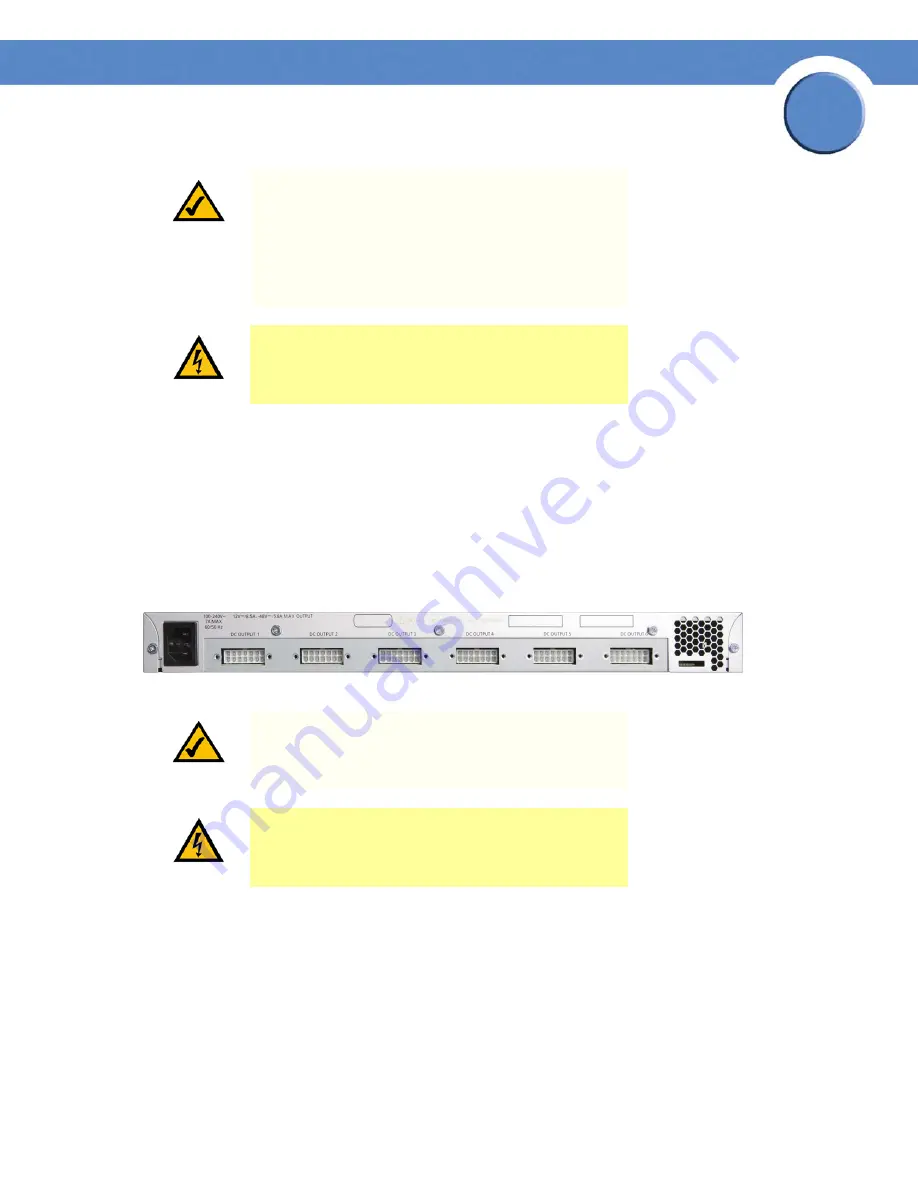
18
Chapter 3: Installation
Connecting the RPS1000
RPS1000—Business Series 380W RPS Unit Installation & Administration
Chapter
3
With the RPS1000 on a desktop or in a rack, connect devices as follows:
1. If the RPS1000 is already connected to AC power, press the
STBY/ACTIVE
button on the
RPS1000 to put it into standby mode or disconnect the RPS1000 from the AC power. If you
pressed the
STBY/ACTIVE
button, the STBY/ACTIVE LED should begin blinking amber. If the
STBY/ACTIVE LED does not blink amber, see Chapter B, "Troubleshooting".
2. Connect one end of an RPS1000 connector cable (part number: RPSCBL1) to an RPS1000 DC
output connector. To ensure proper operation, be sure that you completely seat the connector
and that you securely tighten the screw.
3. Connect the other end of the RPS1000 connector cable to the RPS1000 receptacle on the switch.
4. Repeat 2. through 3. for each switch that the RPS1000 will support.
NOTE:
The switch might restart when it changes from
RPS1000 power to its own internal power. This situation
might occur after the power supply on a switch fails, the
RPS1000 takes over, and the switch reverts to its own
power. We advise you to assume this possibility and plan
accordingly when you restart a switch using its internal
power after using the RPS1000 as backup power.
WARNING:
Before working on a system that has an on/
off switch, turn OFF the power and unplug the power
cord.
NOTE:
The connector is designed to be inserted into the
receptacle in its correct orientation.
WARNING:
Attach only the Cisco RPS1000 (model
PWR675-AC-RPS-N1) to the RPS1000 receptacle.
























